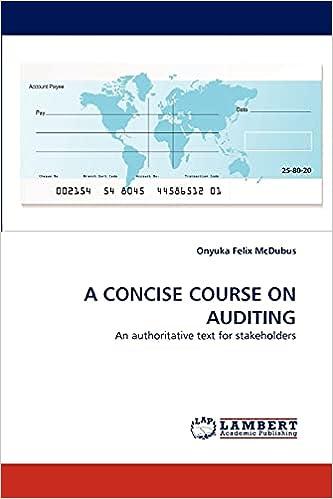Question
Decision Focus: Make-or-Buy Decision with NPV Analysis LO1, 4 Armstrong Company manufactures three models of paper shredders, including the waste container, which serves as the
Decision Focus: Make-or-Buy Decision with NPV Analysis LO1, 4 Armstrong Company manufactures three models of paper shredders, including the waste container, which serves as the base. Whereas the shredder heads are different for all three models, the waste container is the same. The estimated numbers of waste containers that Armstrong will need during the next five years are as follows:
Year- Number of Containers
1- 50,000
2 -50,000
3- 52,000
4- 55,000
5- 55,000
The equipment used to manufacture the waste container must be replaced because it is broken and cannot be repaired. The new equipment has a purchase price of $945,000 and is expected to have a salvage value of $12,000 at the end of its economic life in 5 years. The new equipment would be more efficient than the old equipment, resulting in a 25 percent reduction in direct materials. The old equipment is fully depreciated and is not included in the fixed overhead. The old equipment can be sold for a salvage amount of $1,500. Armstrong has no alternative use for the manufacturing space at this time. Rather than replace the equipment, one of Armstrongs production managers has suggested that the waste containers be purchased. One supplier has quoted a price of $27 per container. This price is $8 less than the current manufacturing cost, which is composed of the following costs: the following costs:
Direct materials $10.00
Direct labor 8.00
Variable overhead 6.00 $24.00
Fixed overhead:
Supervision $ 2.00
Facilities 5.00
.General 4.00 11.00
Total manufacturing cost per unit $35.00
Armstrong employs a plantwide fixed overhead rate in its operations. If the waste containers are purchased outside, the salary and benefits of one supervisor, included in the fixed overhead at $45,000, will be eliminated. There will be no other changes in the other cash and noncash items included in fixed overhead. Armstrong is subject to a 40 percent income tax rate. Management assumes that all annual cash flows and tax payments occur at the end of the year and uses a 12 percent after-tax discount rate. Required
A. Define the problem that Armstrong faces.
B. Calculate the net present value of the estimated after-tax cash flows for each option you identify.
C. What is your recommendation? Support your recommendation by explaining the logic behind it
Step by Step Solution
There are 3 Steps involved in it
Step: 1

Get Instant Access to Expert-Tailored Solutions
See step-by-step solutions with expert insights and AI powered tools for academic success
Step: 2

Step: 3

Ace Your Homework with AI
Get the answers you need in no time with our AI-driven, step-by-step assistance
Get Started


